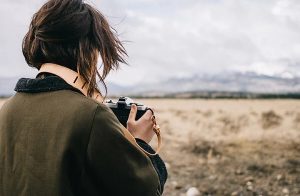Film photography is a form of art that is full of anticipation and surprises. In the digital age, where taking photos on your smartphone can be as simple as tapping it, bobservational has become an art filled with anticipation and surprise. You can compare it to making pancakes. You mix all the ingredients carefully, but you don’t know what each one will look like until you see them sizzle on the griddle.

Film photography offers a tactile experience that digital photography lacks. With its whirring camera and rolls of film awaiting development, it is a pleasure to use. Each roll of films invites you to dance with the light and shadows, transforming ordinary moments into masterpieces, encased within tiny, transparent frames.
Shooting on film may seem like learning how to write with a hand other than your dominant one to those who are used to instant gratification. Film photography is so appealing because it takes you back to the basics. Photographers are forced to spend more time with their subjects because of the delay between taking an image and viewing it. Slow down and think about each shot because every click of the camera costs you both in film as well as in missed opportunities.
Film’s physicality is also a key factor in its appeal. It is almost a ritual to load a film roll into a camera. It requires attention and precision – aligning the film just right, closing it gently but firmly. Every frame is important. There’s no delete button.
Film is not just about resisting digital technology or nostalgia. It’s also about accepting imperfections. Film grains add character to photos, adding warmth and depth which are often missing in digital images. The grains on film are similar to fingerprints. No two rolls will ever be the same.
Different types of films, whether black and white or in color, can dramatically change the mood and story behind photographs. Black and white films remove the distraction of color and bring textures and contrasts into focus. Color films can portray reality in vibrant colors or muted shades depending on their chemical composition.
Then, comes the part that is most exciting: developing your photos. It’s like entering a magician’s lair when you transform your kitchen or bathroom into a darkroom. The red light bulb glows as images appear on paper that has been submerged in chemicals. It’s a ghostly process, where hidden worlds are revealed before your very eyes.
Let’s also not ignore the challenges! Film photography is a test of patience in every step, from manually focusing lenses to guessing the exposure settings without an LCD screen. The journey is not complete without mistakes. They teach you valuable lessons that automatic modes cannot.
While we’re talking about mistakes, let’s also talk about unexpected light leaks and accidental double exposures that could ruin a shot or create something magical by accident! These happy accidents can add depth to a story by adding images that are impossible to plan or duplicate digitally.
These quirks are often the subject of stories from film photographers: triumphant tales about mistakes turned into successes or sad anecdotes that a ‘perfect shot’ was ruined because of a technical error.
The thrill of filmmaking is not only in the capture of an image, but also in its creation through physical media. These quirks can shape the final outcome in unpredictable and beautiful ways.
If you’re looking for a creative outlet that isn’t bound by pixels, or if you want to experience some surprises in a world of overly predictable routines, give film photography a try! Who knows? It’s possible that you will fall in love with its messy charm, where each photograph not only tells what is seen but also whispers stories about how it was created!